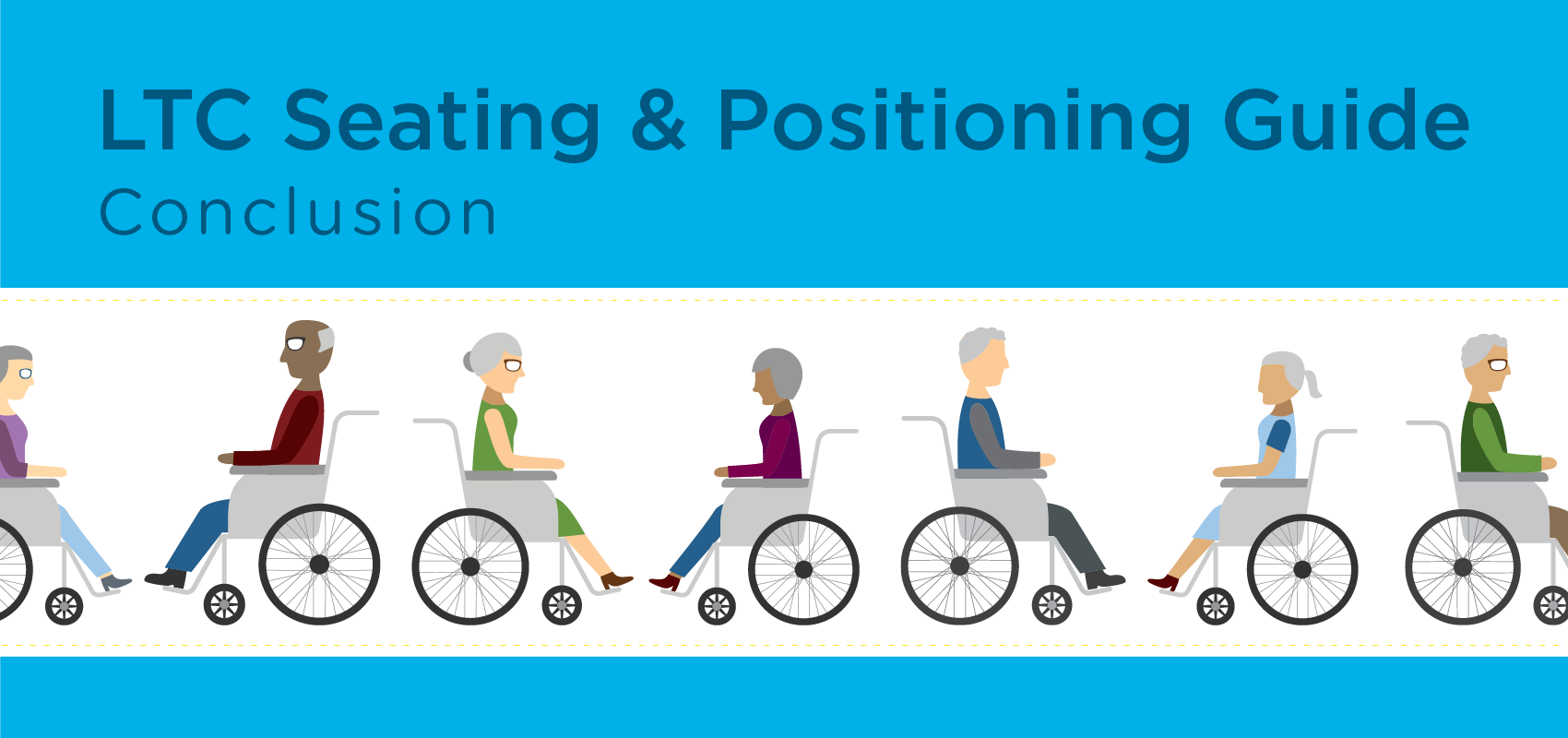The last part, Part 22, in our LTC Seating & Positioning series intended to shed some light on the mystery of seating and positioning in the Long Term Care setting. See the rest of the blog posts listed below in this post.
We've come to the end of our series on wheelchair seating and positioning in the Long Term Care (LTC) setting. The point of the series was to shed some light on the mystery of seating and positioning in the LTC setting. The aim was to assist the LTC therapist in obtaining customized, optimal posture for each resident by:
- Understanding universal wheelchair terminology (General Information)
- Identifying the abnormal postures created by poor wheelchair positioning (Problems)
- Understanding how ill-fitting components lead to abnormal postures (Problems)
- Identifying keys to a successful wheelchair evaluation in the LTC setting (Solutions)
Below is a table of contents that will give you a quick view of all the things you can expect to learn by having one of these guides in your clinic as well as a link to the corresponding blogs.
LTC Seating & Positioning Guide Table of Contents:
General Information:
The Best Wheelchair Options in LTC (Part 1)
Problems:
Posture Problems: How proper wheelchair positioning can prevent anterior pelvic tilt, posterior pelvic tilt, pelvic obliquity, and pelvic rotation (Part 2)
Posterior Pelvic Tilt: The Correction of Sacral Sitting (Part 3)
Anterior Pelvic Tilt: Causes and Solutions through Wheelchair Positioning (Part 4)
Pelvic Obliquity: Definition, Symptoms, and Solutions (Part 5)
Pelvic Rotation: Symptoms and Treatment through Wheelchair Positioning (Part 6)
Fixed vs Flexible Postural Abnormalities: Accommodate or Correct Postural Problems (Part 7)
Windswept Posture: Symptoms and Treatment through Wheelchair Positioning (Part 8)
Incorrect Seat Dimensions: Could this be the true culprit of poor posture in the wheelchair? (Part 9)
Issues with Current Wheelchair System: Seat-to-floor-height (Part 10)
Issues with Current Wheelchair System: Back Support (Part 11)
Issues with Current Wheelchair System: Leg Rest (Part 12)
Issues with Current Wheelchair System: Armrest (Part 13)
Issues with Current Wheelchair System: Head Support (Part 14)
Goals:
Why is wheelchair seating and positioning important for our residents? (Part 15)
Solutions:
How to Measure for Properly Fitting Wheelchair Components: Steps of a seating evaluation (Part 16)
How to Measure for Properly Fitting Wheelchair Components: Specific Measurements (Part 17)
How to Choose a Cushion in Long Term Care (Part 18)
How to Choose a Specialized Back Support in Long Term Care (Part 19)
The Great Elevating Leg Rest Myth (Part 20)
When to add Wheelchair Accessories in Long Term Care (Part 21)
Remember there is NO cookbook solution to wheelchair seating and positioning. Each resident has their own medical diagnosis (and no two residents with the same diagnosis present the same), co-morbidities to take into account, personal preferences and even perceptions of what is best (even if we as therapists aren’t in agreement). Therefore, it is imperative that we are as well versed as possible in the fundamentals in seating and positioning to use clinical reasoning skills and figure out what's best within the parameters we are given.
I promise if you trial equipment until both you and your resident are satisfied while keep the following goals in mind, then you can be rest assured you are providing the resident with the best solution possible!
- Maximize stability and alignment
- Minimize pain
- Correct deformity when possible
- Prevent further deformity
- Create even pressure distribution through an optimally configured wheelchair to prevent wounds
- Maximize resident comfort
Knowledge is power, happy treating!

Ana Endsjo, MOTR/L, CLT
Clinical Education Manager LTC Division
Ana Endsjo has worked as an occupational therapist since 2001 in a variety of treatment settings. She has mainly worked with the geriatric population, dedicated to the betterment of the treatment of the elderly in LTC centers. Her focus has been on seating and positioning and contracture management of the nursing home resident. With this experience, her hope is to guide other therapists, rehab directors, nurses, and administrators through educational guides, blogs, webinars, and live courses in her role as Clinical Education Manager for the long term care division.

